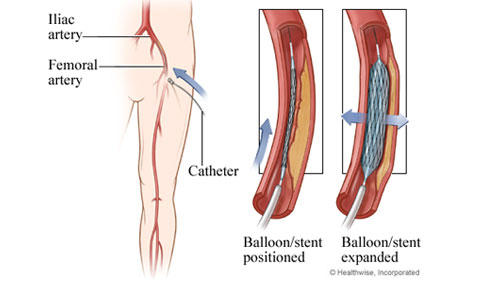Peripheral Vascular Intervention Procedures are used to open blocked arteries in areas other than the heart. Peripheral vascular disease can cause blocked or narrowed arteries in the neck, arms, legs and abdomen (peripheral arteries). This condition can cause strokes, leg pain, kidney problems and high blood pressure.
Peripheral angioplasty is a procedure similar to a cardiac angioplasty during which doctors may also use balloon angioplasty or stenting to open narrowed vessels in other (peripheral) parts of the body, such as the legs, arms or the carotid arteries in the neck that lead to the brain. Opening blocked carotid arteries can help prevent a stroke.
A peripheral vascular specialist can also use stents to repair blockages in the peripheral arteries in the legs, or int eh carotid arteries in the neck. To help relieve the pain involved with Peripheral Arterial Disease (PAD), doctors may use balloon angioplasty and stenting in methods that are similar to the interventional heart procedures described above. Drug Coated Balloons (DCB) are a newer treatment option for peripheral artery disease that allows the artery to be expanded and treated by a balloon, while at the same time releasing a special medicine directly into the arterial wall that prevents a new blockage from forming, but does not leave any permanent material behind.

